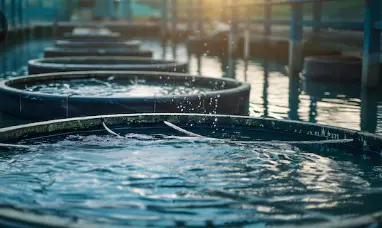A clean water tank is essential for keeping your family or workplace safe. But over time, sediment and biofilm can build up, making the water less clean and even unhealthy. Knowing how to reduce sedimentation and biofilm growth is important if you want your water tank to stay in top shape. This guide explains what causes these problems and how to handle them easily.

Understanding the Problem: Sedimentation and Biofilm
Sediment and biofilm are the usual suspects behind dirty water tanks. Sediment is made of particles like rust, sand, and debris that settle at the bottom. Biofilm is a slimy layer of microorganisms that stick to the tank’s surfaces. Both can become a breeding ground for harmful bacteria, affecting water quality and health. That’s why learning how to reduce sedimentation and biofilm growth is so important.
Best Practices for Prevention
Stopping contamination before it starts is always a better idea than dealing with it later. A few simple steps can go a long way.
- Keep the tank sealed
Dust and debris shouldn’t get inside. Make sure the tank is tightly sealed. - Use good filters
Installing quality filters helps keep particles from the incoming water out of the tank. - Watch for changes
Keep an eye on the water’s color and smell. If something feels off, it’s time to check. - Choose the right location
Placing your tank in a cool, shaded area can slow down algae and microorganism growth.
These small efforts are easy but super helpful in reducing sedimentation and biofilm growth over time.
Professional Water Tank Cleaning Services in Sharjah
While you can try some DIY methods, the real solution comes from experts. At Al Atta, we specialize in professional water tank cleaning services in Sharjah. We don’t just rinse the tank; we clean it deeply. Our team uses advanced tools and safe, approved chemicals to remove stubborn sediment and biofilm completely. We also inspect for cracks, leaks, and other issues, giving you a full report. Choosing professional service means longer tank life, safer water, and peace of mind. We help reduce sedimentation and biofilm right from the source.
Frequently Asked Questions
It’s natural to have questions when you want to reduce sedimentation and biofilm growth. Here’s what most people ask us:
- How often should I clean my water tank?
Experts recommend cleaning it at least once a year. For older or heavily used tanks, every six months is better. - Can I clean the water tank myself?
You can rinse it, sure. But DIY cleaning rarely removes all the biofilm or deep sediment. Disinfecting properly is tricky without the right tools. - How do I know when it’s time to clean?
Look for cloudy water, a bad smell, odd taste, or visible particles. These are signs that cleaning is overdue. - What’s the best way to remove biofilm?
Biofilm sticks tightly and resists simple cleaning. The most effective way is multi-stage: scrubbing, high-pressure washing, and chemical sanitization. - Is it safe to use the water right after cleaning?
Professionals rinse the tank several times. They’ll tell you exactly when it’s safe to use, usually after refilling and checking the quality. - Will cleaning make the tank last longer?
Absolutely. Regular cleaning prevents rust and sediment buildup, helping the tank last longer and saving you from costly repairs.
Conclusion
Sediment and biofilm can quietly harm your water quality. Taking steps early and getting professional help is the best way to reduce sedimentation and biofilm growth. At Al Atta, we’re here to keep your water tank clean, safe, and in great condition. Contact us today and let’s make sure your water stays healthy for everyone.
